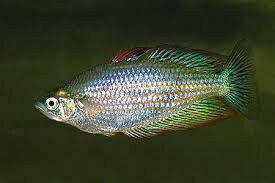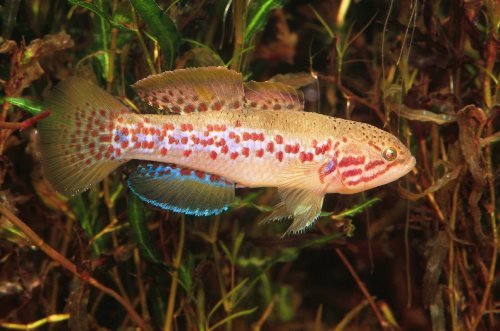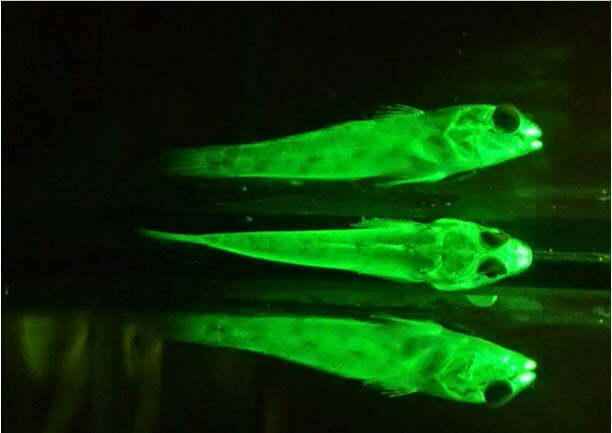A suite of research techniques exist that enable the in-depth study of the ecology of large-bodied, adult fish. Most notably in recent years, radio-telemetry has seen rapid advances and provided insights into the movements of many native and introduced species. In stark contrast, similar tools for studying the larval and juvenile phases of many fishes, particularly those with very small body sizes, has not progressed to the same extent, hampering our abilities to study their ecology.
There are, however, are developments in calcein marking, immersion marking with enriched stable isotopes, and transgenerational marking that provide new approaches to studying the biology and ecology of early life history phase fishes. In addition, greater appreciation of the wealth of information stored within the earbones (otoliths) of fishes may reveal some of the mysteries of fish early life history.
The wet tropics region of Queensland is a biodiversity hotspot for freshwater fish diversity in Australia. As we are learning more about the biology and ecology of the later life history phases of some of the larger species (e.g., Barramundi, Jungle perch), many of the smaller species and early life history phases of fishes are relatively neglected, despite their contribution to ecosystem function and population structure. Understanding these critical life history phases is vital to long term sustainable management of the wet tropics.
The study species:
The Eastern rainbowfish (Melanotaenia splendida) is a small (< 15cm) colourful freshwater fish of North-east Queensland. Often numerically abundant where present, they are a popular species in the aquarium fish trade, due to their spectacular colours and ease of captive breeding. In north-east Queensland, rainbowfish exhibit a prolonged breeding season.

Females can spawn daily, depositing small numbers (< 50) of eggs on submerged vegetation. Eggs hatch after several days and larvae are 3–5mm in length, and free swimming upon hatching. Beyond this, we know very little about the lives of early life history phase rainbowfish.
Similarly, the purple spotted gudgeon (Mogurnda adspersa), is a small (< 15cm) colourful freshwater fish that has a widespread distribution throughout eastern Australia, and is present in North-east Queensland.

In the wild, ‘Moggies’ can be the most abundant species in small, headwater streams. Moggies are also popular aquarium species, and readily breed in captivity. Adult female PSGs can produce a clutch of up to 1300 eggs, which the male guards for several days until they hatch. Multiple clutches can be produced over a breeding season. Larvae are slightly larger than rainbowfish larvae, and are weaker swimmers upon hatching. With the exception of a single mark-recapture study, very little is known about the ecology of this species.
New tools are needed for the study of the early life history phases of these two species, and other Australian freshwater fishes. The application of techniques that reveal information locked inside the otoliths of early life history phase fishes present a major untapped resource. However, before these techniques can be applied, we need to understand how they work, and their limitations.
Project aims:
- Validate transgenerational marking for mass marking the larvae of eastern rainbowfish and purple spotted gudgeon.
- Evaluate the impacts of the marking technique on larvae and juvenile fish to determine if it may have any negative consequences.
- Determine if larval fish earstones (otoliths) can reveal the age and growth histories of early life history phase purple spotted gudgeons.
Findings:
- Transgenerational marking is a highly effective method for mass-marking the larvae of both eastern rainbowfish and purple spotted gudgeons
- A female eastern rainbowfish will continue to produce marked offspring in excess of 6 months after being injected with a dose of enriched stable isotopes
- Multiple unique markers can be produced by injecting a concoction of enriched stable isotopes into female purple spotted gudgeons
- Growth and survival of larval and juvenile purple spotted gudgeons is unaffected by transgenerational marking
- Other than slight increases in body depth, the morphology of larvae eastern rainbowfish and purple spotted gudgeons is unaffected by transgenerational marking
- The earstones of early life history phase purple spotted gudgeons faithfully reveal the age and growth history of individual fish exposed to fluctuating food and thermal regimes
Implications:
The findings of this research program in conjunction with previous studies provide the necessary tools to determine the role of the early life history ecology on population demographics of eastern rainbowfish and purple spotted gudgeons. Future field-based and lab-based studies can use these tools to explore recruitment processes in these small-bodied tropical fishes. This information will assist in future planning decisions with respect to conserving biodiversity in the face of increasing water infrastructure development in Northern Australia.



